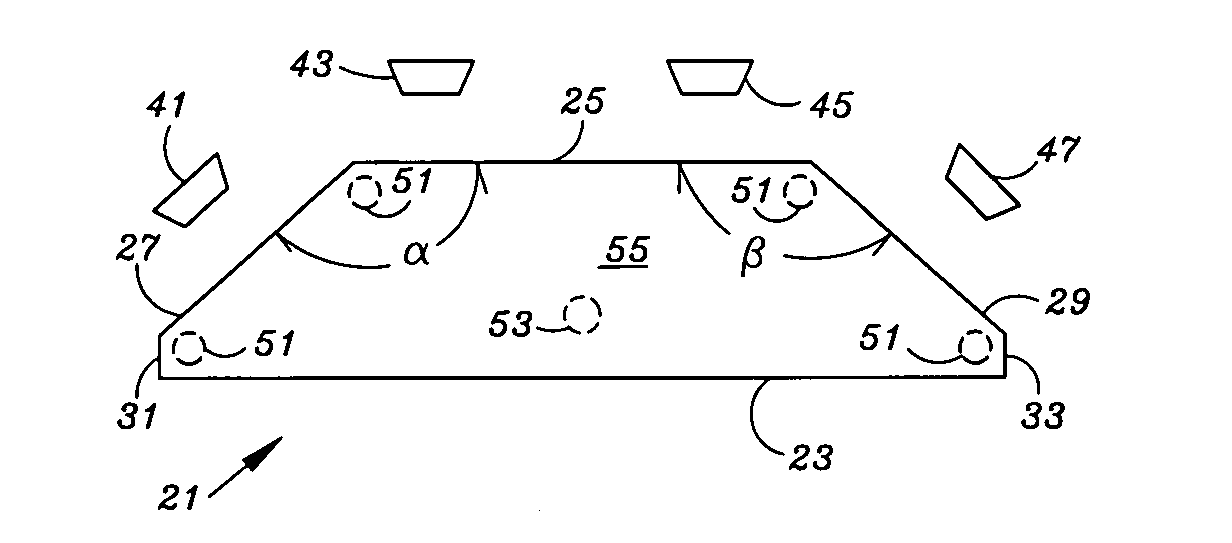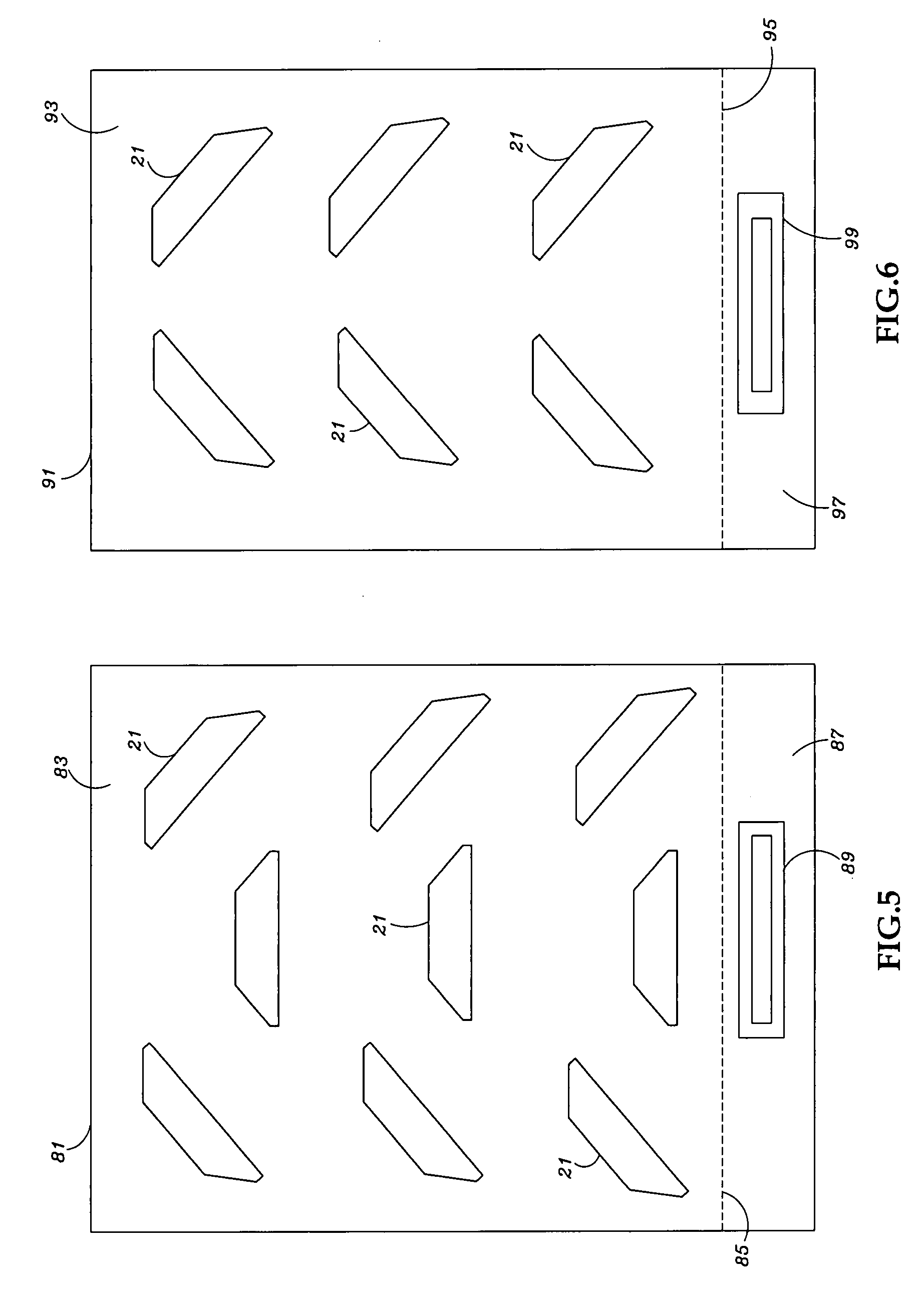Table topology and arrangement
a table and topology technology, applied in the field of table topology and arrangement, can solve the problems of not meeting the optimum arrangement in terms of seating capacity, inconvenience outweighed by need, and all furnishings are likely to experience periodic overcrowding, so as to reduce the width arrangement and soften the harshness of the table end
- Summary
- Abstract
- Description
- Claims
- Application Information
AI Technical Summary
Benefits of technology
Problems solved by technology
Method used
Image
Examples
Embodiment Construction
[0025]The description and operation of the invention will be best initiated with reference to FIG. 1, which is a perspective view of a table 21. Table 21 has a first main longer side 23 and a second main shorter side 25 which is parallel and opposite to the first main longer side 23.
[0026]Table 21 has a first angled side 27 adjacent to the second main shorter side 25 and a second angled side 29 adjacent to the second main shorter side 25. As is shown, the first angled side 27 forms an angle α with respect to the second main shorter side 25. The second angled side 29 form an angle β with respect to the second main shorter side 25. Although the angles α and β are shown as being the same for both of the angled sides 27 and 29, these angles may be different to accommodate different combinational schemes. A first shortened end side 31 is shown as being a transition located between the first main longer side 23 and the first angled side 27, and can be of any shape. Likewise a second short...
PUM
 Login to View More
Login to View More Abstract
Description
Claims
Application Information
 Login to View More
Login to View More - R&D
- Intellectual Property
- Life Sciences
- Materials
- Tech Scout
- Unparalleled Data Quality
- Higher Quality Content
- 60% Fewer Hallucinations
Browse by: Latest US Patents, China's latest patents, Technical Efficacy Thesaurus, Application Domain, Technology Topic, Popular Technical Reports.
© 2025 PatSnap. All rights reserved.Legal|Privacy policy|Modern Slavery Act Transparency Statement|Sitemap|About US| Contact US: help@patsnap.com



